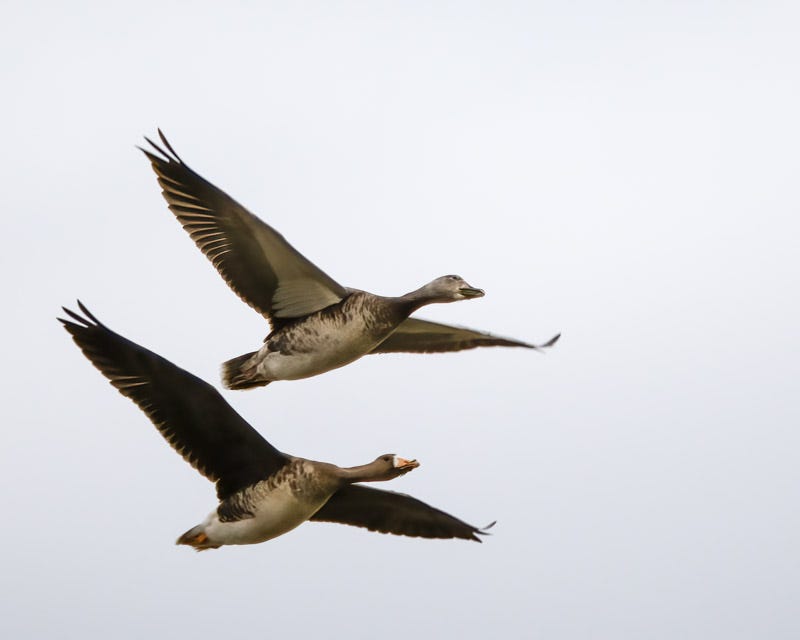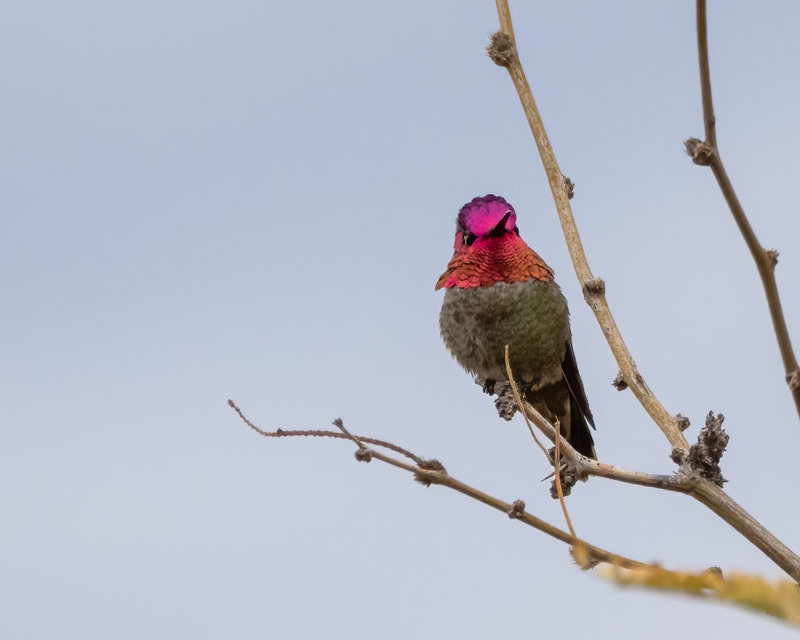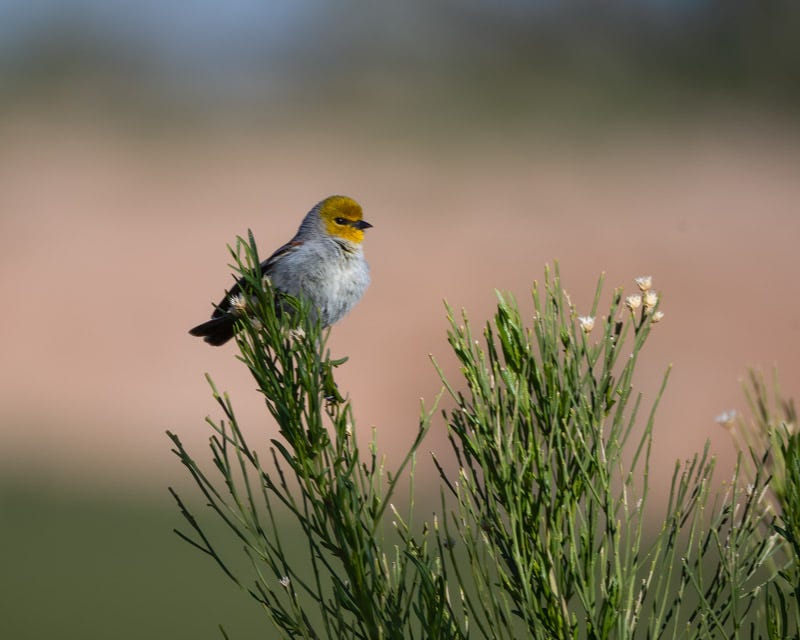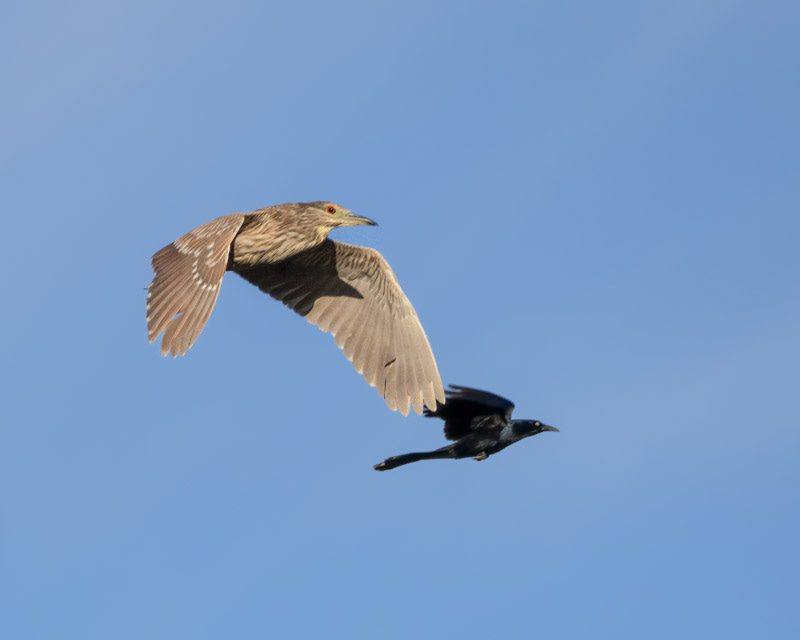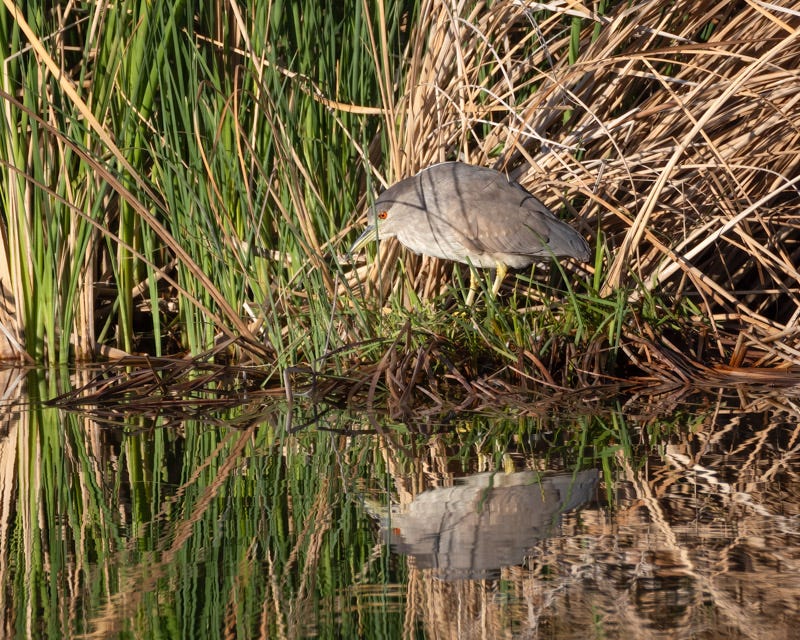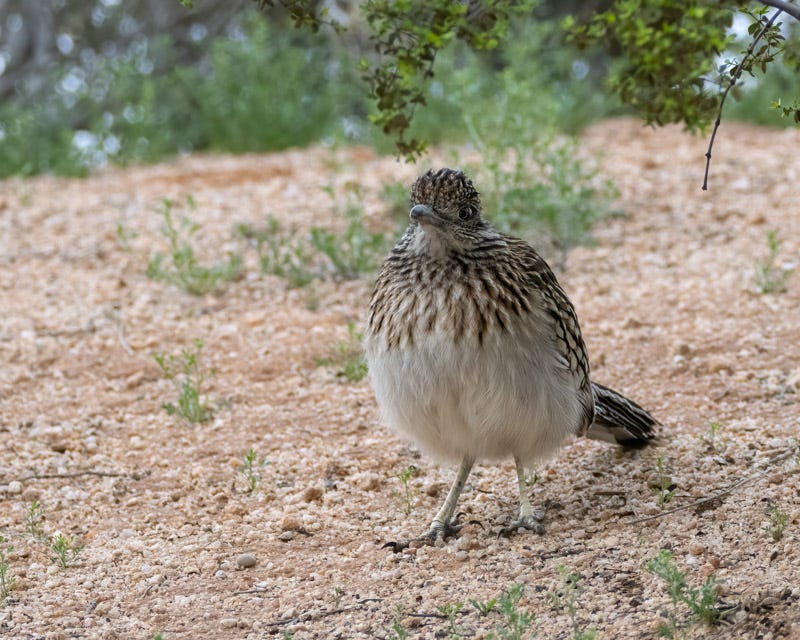A Few Photos from a Golf Course
In anticipation of this year's Birdathon
As you may know, a group of friends and I have been able to regularly bird at the Sewailo Golf Course located on the Pascua Yaqui Reservation next to Casino del Sol. This is a private and closed location to birders and we are not golfers, but we have been able to enjoy the "birdies" monthly at this desert oasis that features over 14 acres of ponds and streams. The Vermilion Flycatcher below often seems to welcome us.
Additionally, our group has participated in the annual Tucson Audubon Birdathon every April. It is a way for us to give back to Tucson Audubon for the great work they do in the Tucson area to inspire people to enjoy and protect birds. One of the 'fun' birds we have been seeing at Sewailo this winter was an immature Greater White-fronted Goose. This species breeds in the tundra of northern Canada and Alaska so this bird made an incredibly long migration to its winter home in Tucson.
Somehow an immature Snow Goose that made the same journey this year also ended up at the golf course and the two birds became close pals. This Snow Goose is a dark morph, called a Blue Goose. Its body feathers will not turn white like those of most Snow Geese but it will continue to have a dark brown body.
The two geese remained fast friends all winter. They should be heading back to the tundra any day now and we wish them a successful trip.
The course has a good number of rosemary plants. They have been flowering and the flowers are a favorite food of the Lesser Goldfinches.
Our April trip to Sewailo will be fun for two reasons. In the springtime (the heart of migration season) we should be seeing some interesting birds. Additionally, April is the time that we visit Sewailo for our Birdathon. We are asking people to donate to our team, called Birdies, Bogeys, and Eagles, one of many teams participating for Tucson Audubon. People can make a pledge based on the number of species we see that day (aka, making this a typical "-athon") or people can just make a flat donation. You can find our team's page at https://tinyurl.com/2c93w8up
This Anna's Hummingbird had staked out its territory and returned to this specific branch regularly.
A female Mallard posed nicely for us last month. Although most of her plumage is subdued, the blue of her wing patch is all the color she needs to make a bold fashion statement.
The golf course's mix of water, expanse of grasses, surrounding vegetation, all set amidst the Sonoran desert allows for a variety of birds. The Verdin sticks to the desert edges of the course. Here it was on top of a desert broom.
By visiting the same location monthly we become a bit more familiar with the seasonal change in both bird presence and bird behavior. Black-Crowned Night Herons are more commonly seen there during the breeding season. Last month we saw one immature Black-crowned Night Heron fly off and land in nearby reeds. Almost immediately it was chased out and mobbed by a number of male Great-tailed Grackles. Apparently the heron had landed too close to the grackles' territory. The grackles escorted the heron in the air for a while as he circled around the water until he finally got the message and flew off to a distant pond.
Meanwhile, another Black-crowned Night Heron stood quietly along the water without venturing into the reeds where the Grackles were. They left this heron alone since the heron kept to its own space. Neither of these two herons had adult plumage yet. When that happens, their bodies will be white and their caps (their "crowns") will indeed be black.
Roadrunners are regular residents at the course. On this cool morning the Roadrunner was so puffed up in an attempt to stay warm that it looked almost round from this angle.
We will head back to this course later in April on our Birdathon day. We hope you will join us in making a difference for birds and their habitats by donating or pledging to a Birdathon team today! If not, thanks for continuing to show your interest in birds and nature of the Southwest in any way that you do. https://tinyurl.com/2c93w8up





